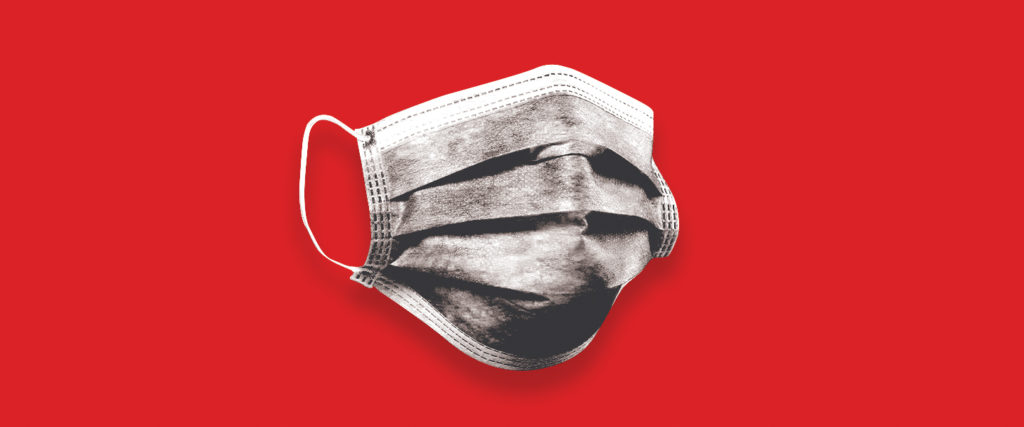How the pandemic gave Etsy a new lease on life

When Emma Hultman first started her Etsy store, EmmaMadeByEmma, she planned to sell the natural lip balms she had previously sold elsewhere or made for friends and family. Instead, she’s become one of tens of thousands of sellers making reusable face masks at home, then selling them to strangers via the crafter marketplace.
At home in Britain’s West Sussex, she fires up her sewing machine after work for a few hours to make the cotton masks, printed with paisley or polka dots. While it’s still very much a hobby, demand has far exceeded her expectations: “I’ve made and sold almost 100 masks now since I started mid-June, which has taken me by surprise,” she said. Each retails for about $8.
In early April, the Centers for Disease Control and Prevention changed its guidelines to encourage Americans to wear fabric face masks. “It was like waking up and discovering that it was Cyber Monday,” Etsy CEO Joshua Silverman said, in a recent earnings call, “except that everyone in the world wanted just one product and that one product was an extremely limited supply.”
The company moved quickly. “We put out a call to our sellers and were able to get thousands of sellers to begin making masks within a matter of days,” he said. Sellers were actively recruited, then briefed about delivery times to manage customer demand. In the month of April alone, Etsy sold about 12 million fabric face masks, to a total cost of $133 million. The core Etsy marketplace, meanwhile, grew 79% year-over-year. Its stock price has more than tripled since the start of the pandemic, going from about $35 at the beginning of April to $115 in early July.
The proposition for the months ahead is a little trickier: it needs to maintain momentum once demand for PPE subsides.
There are now more than 60,000 Etsy sellers making face masks. Many, like Hultman, have pivoted to selling PPE from other products, whether due to active recruitment or simply reading the climate. One Hawaiian scrunchie maker began making brightly colored, reversible face-masks, with same-day shipping prominently advertised. Another, formerly producing children’s “princess crowns,” sells dozens of face masks in different floral prints. You can now buy a mask on Etsy to express almost any political or personal sensibility, including emblazoned with Trump slogans or with a jokey message in glittery Yiddish.
A question still looms: How should Etsy retain or even maintain its growth? Speaking to investors, Silverman outlined a few ideas. While he did not expect masks to be an enduring category for the long-haul, he said, this “new cohort of buyers” were ripe to be won over and retained. “We’re going to work really hard to try to earn their loyalty,” he said, “and we’ll have to learn and see what their behavior is over time.”
Ad position: web_incontent_pos1
The company has invested heavily in TV marketing to push the message that Etsy sellers, unlike many other US retailers, are open for business. “When shopping on Etsy, you’re supporting small businesses,” said Silverman. “That’s a message that might be familiar, that’s been a core pillar of our messaging strategy for some time.” The Etsy supply chain was already well-placed for the pandemic. Founded in 2005, it is an established e-commerce player, with no real need to adjust protocols. While retailers closed up or attempted a pivot to online-only, Etsy sellers carried on more or less as usual.
That Etsy should be a go-to spot for everyday essentials is a newer idea. Already, Etsy uses near-real-time search query data to promote the merchandise that customers are already searching for; the company has this year put more resources toward improving its search data, including making sure it’s “clean” and in usable formats.
While Silverman did not expect these efforts to pay off in the next quarter, he hoped improving its search tool and recommendations would make Etsy better in the medium- and long-term, he said. Previously, shoppers searching for “masks” were generally looking for Halloween costumes rather than PPE; by improving its search function, Etsy was able to serve them more relevant results almost in real time, Silverman said, to both improve the experience and connect customers with what they were actually looking for. The company’s concerted push to get sellers to make masks could also be the first iteration of a new model, in which “makers” are recruited to fulfill shoppers’ needs as they change.
For Hultman, it’s been an unambiguously positive experience. While face masks do seem to be “the thing that sells most at the moment,” she said, she’s hopeful that the pandemic may spark more of an interest in other reusable products. “I will try and build my shop making natural and sustainable products,” she said. “I have a feeling it will become more and more important to reuse what we have already got, and stop being so wasteful.”

